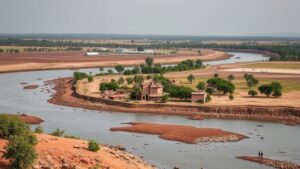Investigating the elusive city of Aztlan, the mythical homeland of the Aztecs.
Investigating the Elusive City of Aztlan: The Mythical Homeland of the Aztecs
The legend of Aztlan, the purported homeland of the Aztecs, has captivated historians, archaeologists, and enthusiasts alike for centuries. This mythical city is fabled to be a paradise of wealth and abundance, surrounded by water and filled with lush landscapes. As scholars continue to investigate the possible locations and origins of this enigmatic place, the pursuit of Aztlan reveals important insights into the history and culture of the Aztec civilization.
The Origins of the Aztlan Legend
Aztlan is first mentioned in historical texts dating back to the 14th century, particularly in the Codex Mendoza, an Aztec document produced shortly after the Spanish Conquest. Linguists believe that the term Aztlan may derive from the Nahuatl word for place of herons, suggesting a geographical link to water. This legend has evolved through the ages, becoming a symbol of origin, identity, and nostalgia for the Aztec people.
Geographical Theories and Speculations
Over the years, numerous theories have emerged regarding the possible location of Aztlan. While many scholars agree that the city is most likely to be found somewhere in northwestern Mexico or the southwestern United States, the exact position remains elusive. Some prominent hypotheses include:
- The Northwestern Region: Many researchers contend that Aztlan was situated in what is today the state of Nayarit, Mexico, near the Pacific coast. This region features various islands and waterways, consistent with descriptions of Aztlan.
- The Great Lakes Area: A contrasting theory suggests that Aztlan might be linked to the Great Lakes region in the United States, particularly areas such as Lake Michigan. This hypothesis stems from the belief that certain Native American tribes have oral histories that parallel the Aztec migration narrative.
While formal archaeological evidence remains sparse, some expeditions have digged in these regions, yet none have produced conclusive results that definitively pinpoint Aztlans location.
The Significance of Aztlan in Aztec Culture
For the Aztecs, Aztlan was more than just a geographical location; it served as a vital cultural symbol. It represents the Aztecs origins, their struggle for identity, and their eventual migration to central Mexico, where they established their empire. The symbolism of Aztlan resonates deeply within the broader context of Mesoamerican mythology and tradition.
For example, the Mexica (the Nahuatl-speaking inhabitants of the Aztec Empire) believed that their journey from Aztlan to the Valley of Mexico was ordained by the gods. This migration is a central theme in Aztec lore and reflects their quest for a promised land, ultimately culminating in the founding of Tenochtitlan in 1325.
Aztlan in Contemporary Culture
The legend of Aztlan continues to hold significant cultural weight among modern audiences. It has been adopted by various groups, including Chicano nationalist movements, which view Aztlan as an ideological homeland for people of Mexican descent. In literature, art, and political discourse, Aztlan symbolizes connection to ancestral roots and cultural heritage.
Also, some contemporary depictions use Aztlan as a metaphor for an ideal society, representing aspirations for unity and equality among marginalized communities. These interpretations underline the importance of Aztlan as a living, evolving narrative that continues to shape identity and cultural pride.
Conclusion: The Enduring Mystique of Aztlan
While the city of Aztlan has remained largely shrouded in mystery, its significance is profound. As researchers investigate its historical, cultural, and geographical implications, Aztlan serves as a testament to the legacy of the Aztec civilization and its enduring influence on modern thought and identity. The quest to uncover its real existence invites both scholarly inquiry and deep personal reflection, demonstrating how myths can bridge the past with contemporary narratives.
For those interested in exploring Aztlan further, consider the following actionable takeaways:
- Engage with scholarly literature on Mesoamerican cultures and the Aztec civilization.
- Visit archaeological sites in northwestern Mexico or the southwestern United States that may offer insights into pre-Columbian histories.
- Participate in discussions or forums that focus on the cultural significance of Aztlan today.



